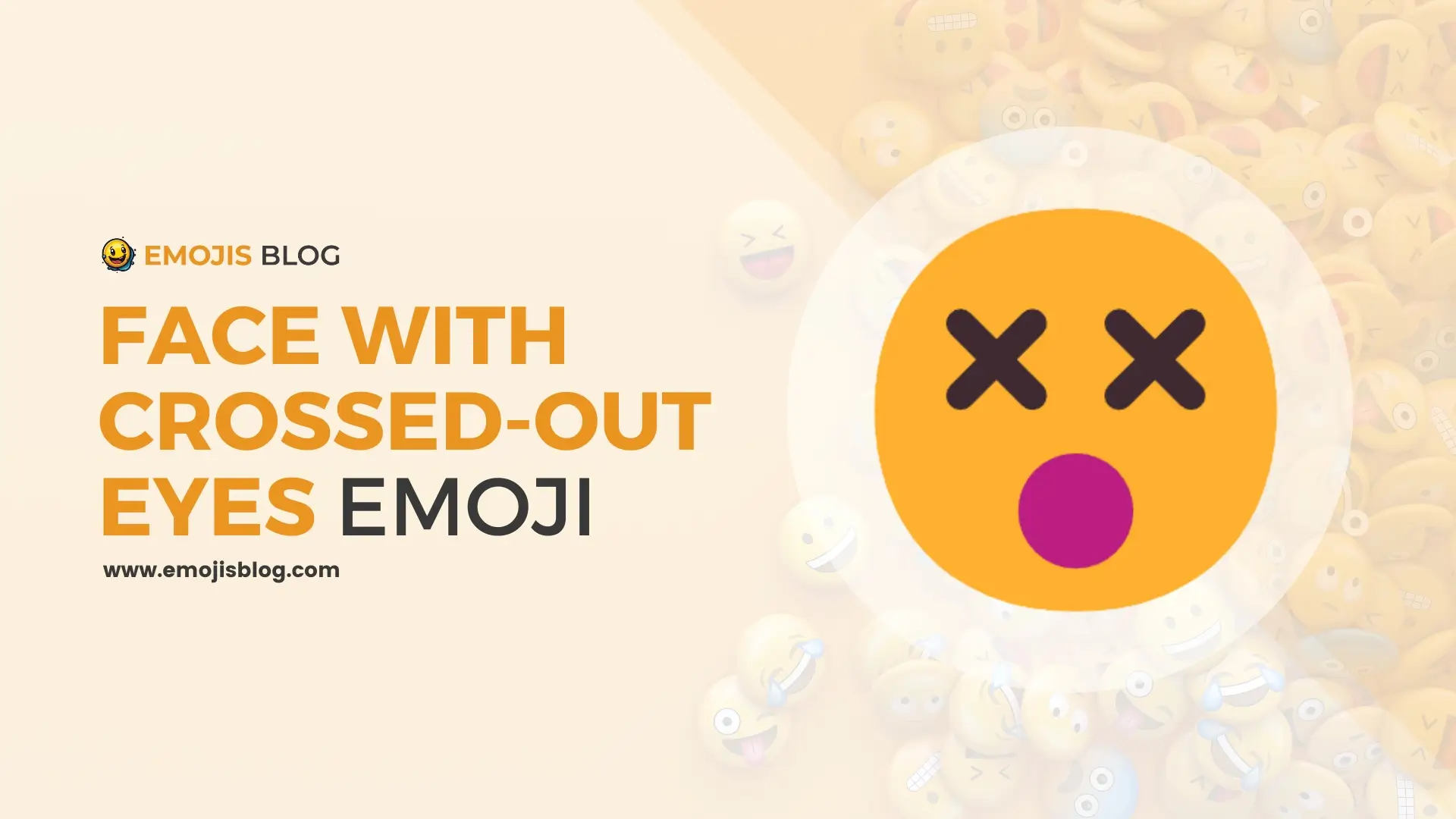What Does The Face with Crossed-Out Eyes Emoji 😵 Mean?
😵
Face with Crossed-Out Eyes Emoji 😵 Meaning
The 😵 emoji, known as the “face with crossed-out eyes,” features a round, yellow face with X-shaped eyes and an open, downturned mouth. Commonly used to convey shock, disbelief, or overwhelming emotions, it also symbolizes extreme exhaustion or being metaphorically knocked out. Its appearance is reminiscent of cartoonish representations of fainting or death, often employed humorously or dramatically in digital communication to exaggerate a reaction to surprising or strenuous situations.
Technical Information
| Property | Details |
|---|---|
| Emoji | 😵 |
| Description | Face with crossed-out eyes |
| Unicode Version | Unicode 6.0 (2010) |
| Emoji Version | Emoji 1.0 (2015) |
| Unicode Codepoint | U+1F635 |
| HTML Entity | 😵 |
| Shortcode | :dizzy_face: (in some platforms) |
| Keywords | dizzy, face, crossed-out eyes |
Understanding the 😵 Face With Crossed-Out Eyes Emoji
The 😵 face with crossed-out eyes emoji, often recognized by its X-shaped eyes and slack, open mouth, is a popular icon used in digital communications. This emoji serves as a versatile symbol in text messages, social media posts, and other forms of online interaction. Its meanings can vary widely depending on the context in which it is used, but typically, it conveys a range of emotions and states such as shock, disbelief, overwhelming feelings, or even a sense of being dead or knocked out. Here, we delve into the origins, usage, and various interpretations of the 😵 emoji to better understand its role in digital expression.
Origins and Design
The 😵 face with crossed-out eyes emoji was first introduced as part of Unicode 6.0 in 2010 and subsequently added to Emoji 1.0 in 2015. Its design is quite straightforward: the face is round with a pale yellow background, featuring X-shaped eyes and a downturned, open mouth, often depicting a state of unconsciousness or shock. The representation of the eyes as crossed-out X’s traditionally symbolizes inanimation or a cartoonish portrayal of fainting or death.
Common Uses and Interpretations
Shock and Astonishment
One of the most frequent uses of the 😵 emoji is to express a sense of shock or astonishment. It effectively captures the speaker’s reaction to unexpected news, surprising revelations, or unbelievable occurrences. In this context, the emoji replicates a dramatic, exaggerated response often seen in cartoons and animations, where characters’ eyes turn into X’s upon encountering something startling.
Overwhelm and Exhaustion
Another common interpretation of the 😵 emoji relates to feelings of being overwhelmed or exhausted. It can be used to symbolize being “dead tired” or metaphorically knocked out by a hectic schedule, intense experiences, or emotional overload. People often use this emoji to convey that they are at their limit or feeling unable to cope with current demands.
Playfulness and Hyperbole
The emoji is also frequently employed in a playful or hyperbolic manner. Users might include it in messages to dramatize a situation comically, adding a tone of humor or light-heartedness. This usage underscores the emoji’s flexibility in conveying a broad spectrum of sentiments, ranging from genuine shock to playful exaggeration.
Cultural Variations in Usage
The interpretation of emojis can vary significantly across different cultures. In some contexts, the 😵 emoji might be understood literally as depicting death or unconsciousness, while in others, it might be seen as a more lighthearted or humorous symbol. Understanding the cultural nuances of emoji use is essential for effective communication, especially in international or multicultural settings.
Conclusion
The 😵 face with crossed-out eyes emoji is a multifaceted character in the emoji lexicon. Its ability to convey a wide range of emotions and states—from shock and disbelief to exhaustion and playful exaggeration—makes it a valuable tool for expressive digital communication. As with all emojis, context is key in determining its specific meaning in any given message. The emoji continues to evolve, reflecting broader changes in language and digital communication practices.

